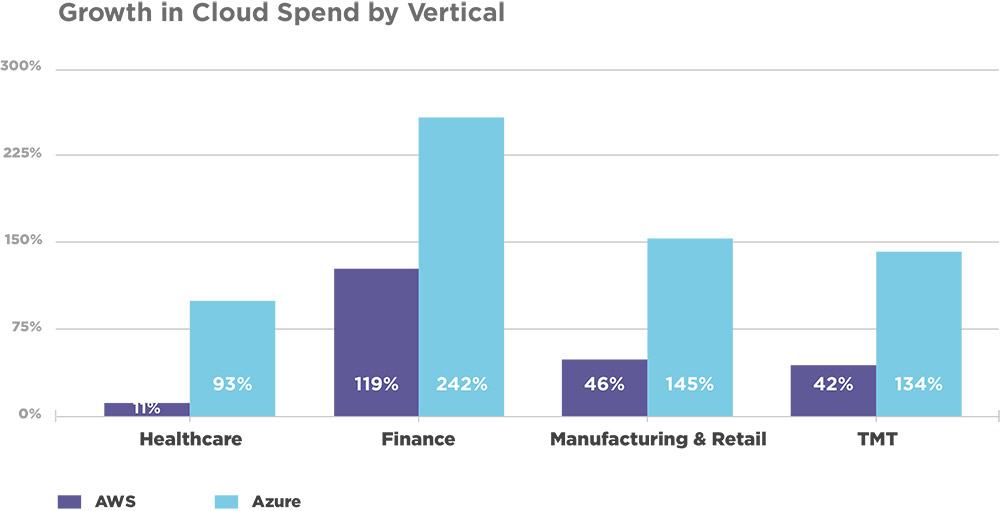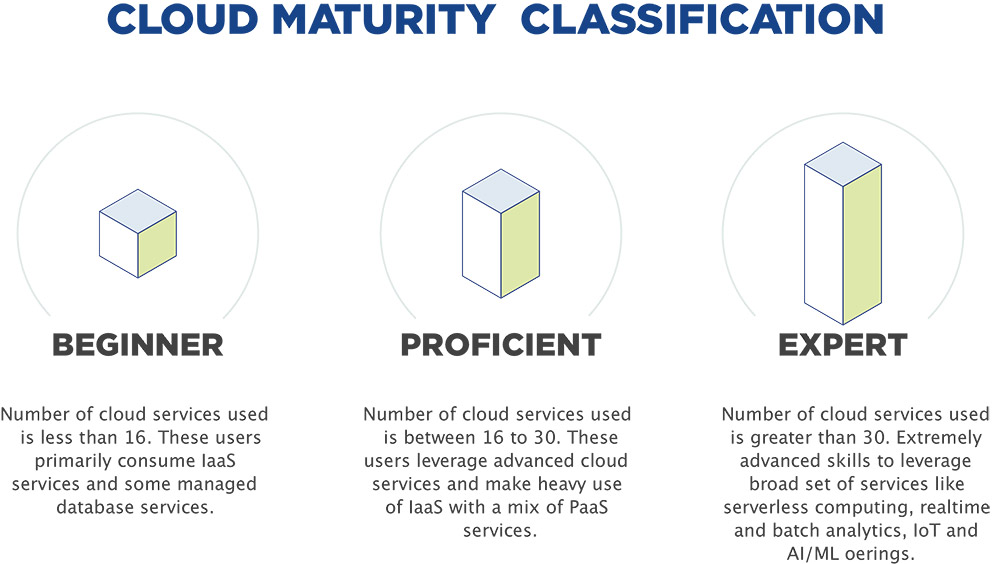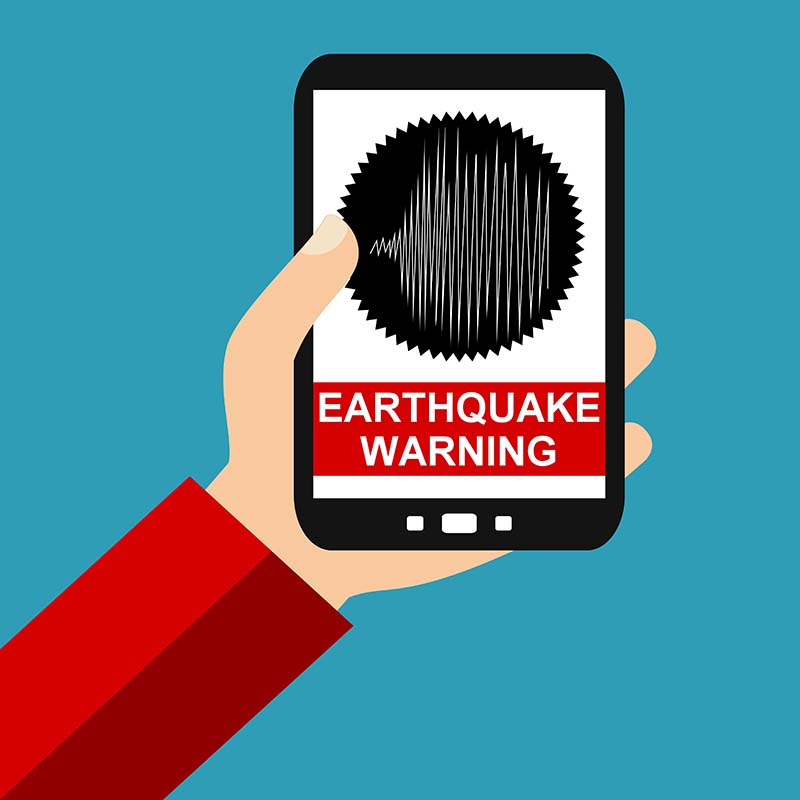Visiting the doctor’s office can be a strange study in technology contrasts, but increasingly healthcare providers are integrating innovations, including cloud computing.
During a routine checkup, a nurse practitioner might take notes on a laptop or tablet in an office equipped with cutting-edge diagnostic devices. But behind the front desk, bookshelves and filing cabinets are filled with old school paperwork.
This juxtaposition of state-of-the-art digital technologies and outdated processes is also replicated behind the scenes, where technologies that power healthcare organizations are often a mix of old and new gear. This is reflected in the 2019 Cloud Usage Report, which shows the healthcare industry, by and large, remains a cloud computing laggard.

Analysis of Nutanix Xi Beam enterprise customers found that 70 percent of healthcare organizations are relative beginners when it comes to using cloud services. Findings also indicated this is changing.

Overall, the 2019 Cloud Usage Report showed that AWS is the biggest cloud player, but Azure is growing more than twice as fast across all industries. Healthcare’s cloud spend on AWS grew by 11 percent over the same quarter in 2018, compared to 93 percent growth for Azure.
[Read the full report: Cloud Usage Report 2019]
“The confidence in cloud around regulatory compliance is still in its nascency,” said Anindo Sengupta, director of product management for Beam at Nutanix and author of the study. “But the numbers show healthcare will continue to progress steadily to the cloud.”
The 2019 Cloud Usage Report was based on anonymized statistically relevant data from hundreds of companies around the world using Xi Beam to identify and fix cloud security vulnerabilities and cost leaks in multi-cloud environments.
Healthcare Moving Beyond Security Concerns About Cloud
Cheryl Rodenfels, a customer success executive at Nutanix with expertise in healthcare IT, sees two big trends.
“First, many organizations receive an Azure allowance when they enter into an Enterprise Licensing Agreement,” she said. “They use Azure as a sandbox to learn how to use cloud technology. The second is Microsoft's recent partnership with organizations such as Providence/St Joseph and Mayo Clinic.
She said Microsoft is helping move the legacy applications to Azure as well as developing innovative applications.
As healthcare evolves to better align with the interests of payers, providers and patients, the industry is recognizing that cloud has a major role to play in transforming how medical care is provided and paid for, according to Rodenfels.
“Healthcare IT understands it needs to use its skills and talent for innovation and optimization,” Rodenfels said. “Not just keeping infrastructure running.”
[Related story: Four Ways to Combat IT Skill Shortages]
Go to the cloud because there's something you need to offer your patients or your physicians. Going to the cloud without aligned goals ends up in failure too many times.
Cheryl Rodenfels, Customer Success Executive, Healthcare, Nutanix
Rodenfels explained there are good reasons why the roughly $250-billion healthcare technology sector has been slow to embrace the cloud. In 2018, the healthcare industry averaged 29.5 data breaches each month. In 2019, the monthly average rose to 37.2 breaches, with April reaching 47 reported incidents, according to The HIPAA Guide.
While secure and reliable IT is essential for every organization, the stakes are even higher for healthcare than in other industries. Keeping medical data safe is tantamount and heavily regulated. IT mistakes can put patients at risk and be costly for healthcare providers. Violations of the Health Insurance Portability and Accountability Act (HIPAA) have cost healthcare organizations more than $75 million in fines since 2016.
Many HIPAA infractions stemmed from IT failures involving third-party vendors who failed to comply with patient privacy rules. Security concerns are among the leading reasons healthcare providers avoided cloud services, according to Rodenfels, who has led innovation in healthcare IT since the 1990s.
“We were very wary about putting patient data in the cloud,” Rodenfels said. “We just didn’t trust the security.”
Another reason healthcare didn’t rush to the cloud was that the industry was accustomed to “moving at the pace of electronic health records (EHR),” said Rodenfels. These digital patient records constitute the critical core of a healthcare organization’s information technology practice. She said the teams responsible for the care and feeding of EHR were often highly skeptical of innovation that promised to alter the status quo and force IT from its comfort zone.
“Job One is the EHR. And IT will be very careful about shifting resources from supporting the EHR,” Rodenfels said.
This, too, is changing, at least in some healthcare organizations, said Rodenfels.
Some Healthcare Providers are Fast to Adopt Cloud
Data analyzed from Xi Beam revealed an interesting anomaly about healthcare and the cloud in relation to other industries. While the majority of healthcare organizations are using six or fewer cloud services – placing them squarely in the “beginner” category – the rest are in the “expert” category, meaning the number of cloud services used is greater than 30. These include advanced skills like serverless computing, realtime and batch analytics, IoT, AI and machine learning.

Unlike financial services, manufacturing and education, the 2019 Cloud Usage Report showed healthcare lacks a middle category, those considered “proficient” users of cloud services.
“We see some companies that are healthcare technology companies, providing technology services for the healthcare vertical,” said Sahil Bansal, a senior product marketing manager for Nutanix Beam and author of the report.
“These healthcare technology companies are more cloud experts because their DNA is similar to the tech world. Pure play healthcare companies are still catching up with the cloud and don't utilize as many cloud services as healthcare technology companies."
However, healthcare might actually benefit from having largely remained on the sidelines as cloud transformed other industries first.
“There are advantages to leapfrogging,” Rodenfels said. “You can learn from the mistakes of others and you can acquire technology when it’s ready to deliver the services you need.”
Rodenfels added that healthcare IT needs to consider aspects of the business that can be overlooked when the focus is chiefly on the EHR. Cloud, said Rodenfels, is increasingly critical for the financial side of healthcare as well as for marketing.
Rodenfels said there are many pressures on healthcare providers to modernize their IT. They need to keep up with a growing patient base and provide them with the kinds of customer experiences people get from retailers and financial services. She said healthcare leaders must increase digital services and decrease costs, but she cautions against using the cloud as a silver bullet fix.
“Go to the cloud because there's something you need to offer your patients or your physicians,” Rodenfels said. “Going to the cloud without aligned goals ends up in failure too many times. And then you’re worse off than before because people can point to that failure and say, ‘See, cloud doesn’t work.’”
In an earlier report by Nutanix, healthcare providers' use of hybrid cloud rose from 19% penetration to 37% in the past two years. The 2018 Enterprise Cloud Index showed that once healthcare does engage with cloud computing, their preferred model is a hybrid approach, with private and public cloud.
[Read the full report: Cloud Usage Report 2019]
Feature photo by Hush Naidoo on Unsplash
Alex Gronczewski is a contributing writer.
© 2019 Nutanix, Inc. All rights reserved. For additional legal information, please go here
Related Articles

Is 2024 a Turning Point for Deep Tech?
From healthcare to energy to climate change, so-called ‘deep tech’ can help solve the world’s biggest challenges.










